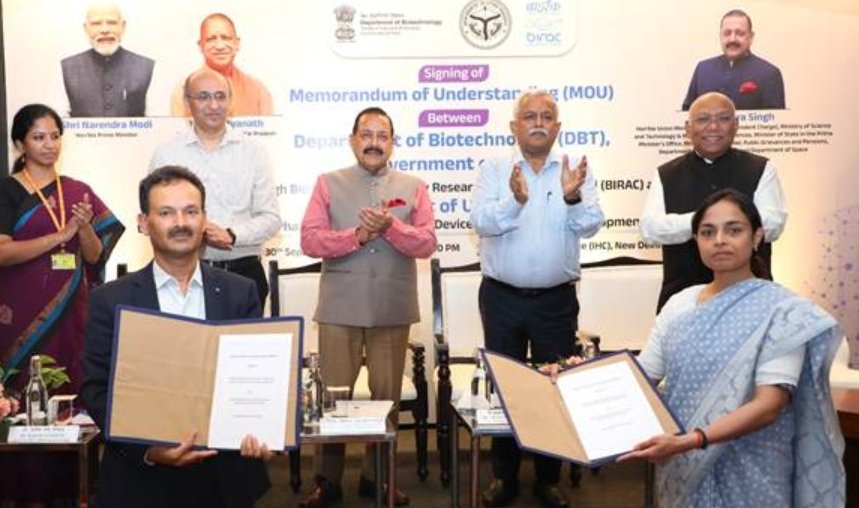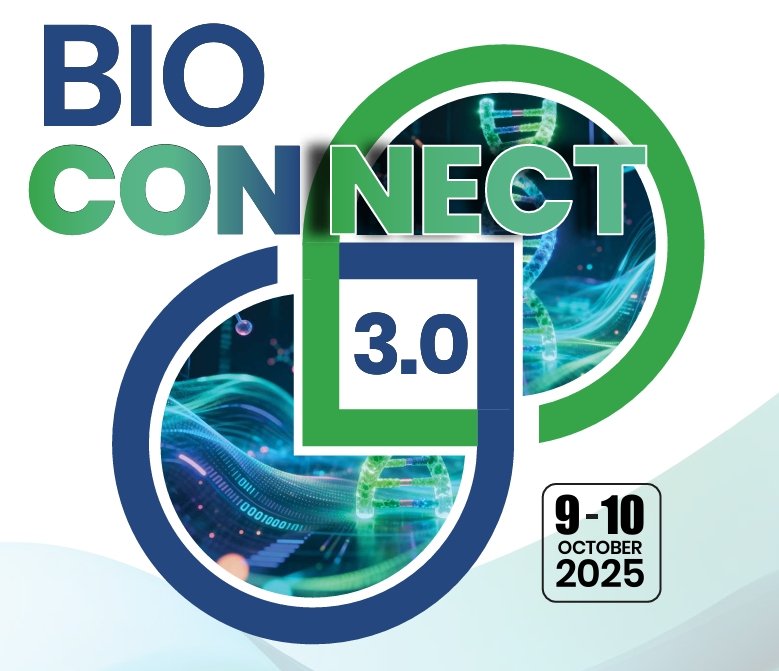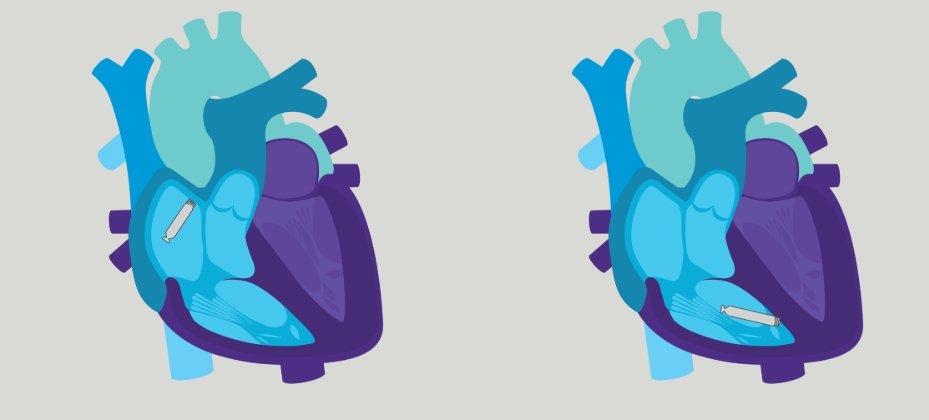PCR, a Nobel Prize Winning Technology
March 10, 2009 | Tuesday | News
PCR,
a Nobel Prize Winning Technology

—Dr.
Bhuwnesh Agrawal, chairman and managing director, Roche Diagnostics
India
More than 30 years ago, the introduction of recombinant DNA technology
as a tool for the life sciences revolutionized the study of
life. Molecular cloning allowed the study of individual genes
of living organisms; however this technique was dependent on obtaining
a relatively large quantity of pure DNA. This depended on the
replication of the DNA of plasmids or other vectors during cell
division of microorganisms. Researchers found it extremely
laborious and difficult to obtain a specific DNA in quantity from the
mass of genes present in a biological sample.
Recombinant DNA technology made possible the first molecular
analysis and prenatal diagnosis of several human diseases.
Fetal DNA obtained by amniocentesis sampling could be analyzed by
restriction enzyme digestion, electrophoresis, southern transfer and
hybridization to a cloned gene or oligonucleotide probes.
However, southern blotting permitted only rudimentary mapping of genes
in unrelated individuals.
Polymerase Chain Reaction
—a scientific success story
Polymerase Chain Reaction (PCR) is a Nobel-prize winning technology
used to amplify, or copy on a large scale, specific sequences of
genetic material, called Deoxyribonucleic Acid, or DNA. The importance
of this technology has moved far beyond its initial purpose of enabling
the detailed analysis of DNA for molecular biology applications and
gene sequencing. Today PCR plays an active role in disciplines as
varied as archeology, forensics, genetics, histopathology, and
medicine. Specifically, PCR enables the detection and analysis of DNA
for purposes such as:
- Diagnosis of genetic conditions or illnesses
- Predicting how well a patient will respond to medical
treatment
- Identifying viruses or pathogens
- Connecting a suspect to a crime
- Establishing maternity, paternity or other blood relation
- Determining identity
History of PCR technology
First described in the journal Science in 1985, PCR has become one of
the most widely used techniques in molecular biology and for good
reason: from the daily practicalities of medical diagnosis to the
courts of law, PCR takes the analysis of tiny amounts of genetic
material to a new level of speed, precision and reliability. Because it
is far simpler, faster, and less expensive than previous technologies
for analyzing DNA (Southern Blot for example), PCR has
“democratized” genetic research, putting a powerful
research tool in the hands of all biologists, even those with a limited
training in molecular biology. In 1993, the Nobel Prize for the
conception of PCR was given to Kary Mullis. The technology was further
developed and applied by the labs of Henry Erlich and David Gelfand,
both now working at Roche, and other teams of scientists at Cetus. The
full history of the technology’s development and application
is marked by an extraordinary collaboration of scientists working in a
corporate setting, working together to identify and overcome the
obstacles to the practical use of PCR for DNA analysis in research and
medicine. In 1991, Roche acquired the rights to PCR technology from
Cetus and then dedicated significant resources to accelerate the
technology’s further advance. From its beginning as a simple
but highly manual process to create many copies of a specific region of
DNA using a test tube, enzymes a reagents, and a heating source to vary
temperature, PCR is now a highly reproducible process that is almost
completely automated and therefore simple enough to be applied to many
fields of science.
Fields of application
During the last twenty years, PCR has radically changed the scientific
world by making it possible to produce sufficient copies of, or
amplify, a portion of DNA for reliable analysis. The list of
applications for PCR is lengthy and ever growing. For example,
pathogenic organisms can be detected in miniscule amounts of blood,
allowing reliable diagnosis and quantitation, thus enabling more rapid
medical response.
Health and medicine
Health, medical treatment and the understanding of disease have all
benefited tremendously from PCR technology. In an age where the genetic
component of disease is increasingly apparent, PCR will continue to
play an important role in medicine. In the late 1990s, the Human Genome
Project, which produced the first complete sequence of the human
genetic code, drew attention to the potential of understanding the DNA
sequence for aiding the development of new drugs and diagnostics, and
have uncovered important variations in the nucleotide bases or
polymorphisms that make up our genes. These single nucleotide
polymorphisms (SNPs) are associated with an increased risk of
contracting a variety of common and complex disease, including various
cancers and cardiovascular disease, and have become targets for
developing new treatments to combat these diseases.
The ability of PCR and gene cloning (a procedure that uses organisms
such as bacteria and yeast to reproduce genes) to produce sufficient
quantities of the DNA code made them instrumental in large-scale
sequencing efforts. In the ongoing research of the genome to uncover
more information about which genes play a role in disease and why some
patients are more susceptible to disease than others, PCR remains
critical.
For patients today, PCR’s ability to detect genetic
variations and mutations has become important for the treatment of such
life-threatening diseases as cancer. The term “personalized
medicine” refers to the goal of ensuring that each individual
patient gets the treatment that will be most successful for him or her.
The most innovative new therapies for cancer, drugs such as Gleevec
(Imatinib) for chronic myeloid leukemia, Tarceva (erlotinib) for lung
cancer, and Herceptin (trastuzumab) for breast cancer, are examples of
targeted therapy that are dependant on knowing which gene mutation is
present or which genes are expressed in the patient’s cancer
tumor. PCR enables the application of personalized medicine by
providing reliable and efficient analysis of tumor DNA.
In general PCR facilitates the practice of, “translational
medicine”, which combines knowledge gathered on the molecular
level with that of a patient’s care, based on the direct link
between laboratory analysis and practical clinical assessment and
management of individual patients.
PCR is an essential tool for improving human health in the diagnosis of
infectious disease. Physicians and researchers can analyze minute
amounts of biological material to track down the source of a viral
infection. The use of PCR to detect harmful pathogens is not limited to
day-to-day medical diagnosis; because immediate response to large-scale
epidemics or containment of contanimated water supplies in extreme
situations (catastrophic medicine) is critical, the ability to confirm
the presence of a pathogen or virus rapidly and precisely is very
important.
Forensic science
Since the first landmark US case of PCR-based genetic analysis in 1986
by the lab of Henry Erlich, PCR has vastly improved police ability to
confirm or exonerate suspects based on their genetic code, which is as
unique as a fingerprint. In contrast to the earlier techniques for
comparing DNA using tissue samples found at a crime scene with samples
from suspects, PCR can amplify DNA using miniscule amounts of biologic
material, including, but limited to, samples of blood, semen, hair, or
saliva.
Enabled by PCR, forensic science today can establish a genetic
fingerprint from biological traces from dental molds, cigarette butts,
eating utensils, and licked envelopes. PCR has the additional benefit
of providing results rapidly, usually within 24 hours, which enables
police investigation to move forward quickly.
PCR genetic analysis comparing forensic specimens with genetic profiles
stored in a database of those previously convicted has solved a number
of crimes without a known suspect. PCR genetic analysis has also been
able to demonstrate the innocence of the wrongfully convicted in
hundreds of cases. PCR can also be used to locate traces of marijuana
or other illegal substances. The role of PCR in investigation was
underlined by the U.S Justice Department’s prediction that by
2010 investigators will be using portable PCR instrumentation to
characterize DNA at a crime scene.
Archeology and
developmental biology
PCR has also become useful in some scientific disciplines not directly
linked with molecular biology. For example, archeologists have found
PCR effective for determining relationships between ancient
civilizations and modern man.
In addition, PCR can provide a new level of information about
individuals from early history through genetic analysis of ancient
tissue specimens, for example from mummies. Researchers can use PCR to
correlate information from history, for example what the historic
record says about a Pharaoh, to the facts apparent from genetic
information.
Evolutionary biologists use PCR routinely to chart the evolution of
plant or animal species. In the ongoing study of human evolution and
anthropology, PCR has helped clarify the genetic differences between
Neanderthal man and modern man, which although far greater than the
miniscule differences between modern individuals from different parts
of the globe, are only half that of the genetic differences that
separate us from our primate ancestor, the chimpanzee. Important
inferences about human evolution can also be obtained by analyzing
genetic differences among modern human populations.
Food production and safety
PCR is effective for analyzing the genetic information of the food we
eat, in that it is able to differentiate between genetically modified
plants and traditional plant species. In addition, PCR is highly
effective in locating pathogens like Salmonella and Listeria in food as
well as confirming water contamination, aiding the effort to improve
food and water safety worldwide.
PCR technology development
Although simple, significant technological challenges had to be
overcome before PCR could be used reliably and reproducibly. The newest
forms of PCR respond to scientific and technical needs, for example,
reverse transcriptase or RT PCR allows scientists to amplify RNA
(Ribonucleic Acid) in the same way they copy DNA. Specialized enzymes
enable the amplification of DNA strands that are several thousand bases
in length; others produce amplification at a very high level of
accuracy. A form of the technology that monitors PCR amplification in
real time extends scientists’ ability to make truly
quantitative measurements.
Other technical advances include “hot start”
systems and automatic cycling systems make DNA copying extremely
specific and precise. As in other areas of the life sciences, PCR can
also be miniaturized, making the technology even more accessible. The
development of PCR technology today can be described as a continual
process of overcoming the technical challenges with efficient
solutions.
Going ahead, PCR will be used to find genetic constellation that are
susceptible or resistant to certain diseases. It will also help define
which drugs and dosages will be optimal for us.
For example, K-RAS is a gene that codes for a protein that plays an
important role in the epidermal growth factor receptor (EGFR) pathway
– a complex signaling cascade that is involved in the
development and progression of cancer.
The K-RAS gene is a defining factor in looking at whether a patient
with colorectal cancer can benefit from EGFR inhibitors, a therapy
which prevents growth signals from entering the cells, thus stunting
the growth of the tumor. Patients with a mutated K-RAS gene (35-45% of
metastatic colorectal cancer patients) do not benefit from certain EGFR
inhibitors like Erbitux.
Recent studies in non-small cell lung cancer have shown that some
patients carry somatic mutations in the EGFR gene. These mutations may
correlate with responsiveness to the EGFR tyrosine kinase inhibitors,
with some mutations having a sensitizing effect and others being linked
to resistance.
More and more complex disease mechanism will be understood which are
often polygenetic in nature. They will help us to screen high risk,
prognosticate disease and optimize treatment, for eg, in various forms
of cancer and metabolic disease. This can be done using PCR or
microarrays.
In few years from now, a genome would probably cost as low as $1,000,
thereby facilitating individualized treatment and personalized
healthcare with PCR technologies. This also will bring about better
understanding of epigenetic phenomena, which represent modifications of
the genetic sequences by methylation.
Genomics will not only continue to develop into a routine technology
but also a cutting edge tool to new areas of biology.










